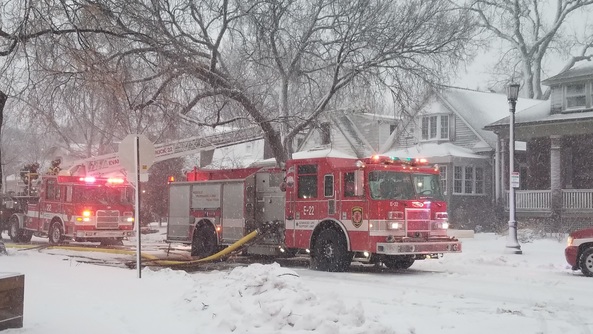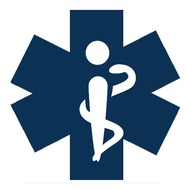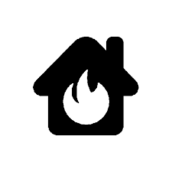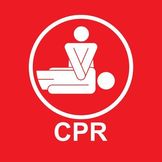 Members of the Evanston Fire Department working to extinguish a structure fire in the 1100 block of South Blvd.
On behalf of the men and women of the Evanston Fire Department, like to express our sincere appreciation for your support during a very busy 2018. The department once again eclipsed over 10,000 calls for service last year, covering everything from structure fires and emergency medical requests to complex specialized rescues. We will remain steadfastly committed to performing each and every day with the highest levels of dedication and professionalism while being engaged in every part of our great community.
Winter is our busiest time of the year for structure fires with December, January and February as the peak months for heating fires. Please take the proper precautions to maintain and operate space heaters, fireplaces and home heating equipment correctly to avoid any fire or carbon monoxide hazards. If you would like a FREE home safety inspection, please contact our Fire Prevention Bureau through 311 (847-448-4311)
Enjoy this month’s Roll Call. If I can be of assistance in any way, please feel free to contact me at 847-866 5924 or bscott@cityofevanston.org
Stay Safe!
Brian R. Scott
Fire Chief
 Firefighters participating in the EPFF firefighters vs. Police cook off. Pictured from left to right: FAO Jason Hays, FAO Wayne Davis, Firefighter Jamaine Collins, Firefighter James Trippi
Below is a breakdown of recent emergency responses.

514 Incidents in December
|
Fire Calls

284 Incidents in December
|
Response Times

EFD average response times for December:
3 min 12 sec from dispatch to emergency
NFPA average: 4 min or less
|
Structure Fires
 |
|
49 total structure fires in 2018
|
Cardiac Saves
 |
|
Achieved Return of Spontaneous Circulation (ROSC) at 17 cardiac arrest incidents in 2018
|
Operations
 As the Evanston Fire Department moves into 2019 with many plans and goals, we would like to reflect back on 2018 and some of our accomplishments. In 2018, the Evanston Fire Department was awarded the distinct honor of an ISO class 1 rating, which less than 1% of fire departments in the country achieve. Evanston Fire Department also implemented a new electronic patient care reporting platform called "mobiletouch." This platform has made our ambulance billing and state exporting capabilities more effective and efficient.
Other 2018 accomplishments and milestones include:
- The Citizens Fire Academy and Fire Explorers celebrated graduations of the Class of 2018
- IROL (Inspection Reporting On-Line) was implemented
- Five members of the department retired
- Eight members of the department were promoted
- Ambulance 22 and two new command vehicles were delivered
As you can see, the Evanston Fire Department has been very busy in the past year, and 2019 isn't looking any different. The department is always striving to find efficiencies to better serve the residents of Evanston in tangible, meaningful ways. We look forward to 2019 and serving this great community.
Fire Prevention Bureau
Carbon Monoxide
Often called the invisible killer, carbon monoxide (CO) is an odorless, colorless gas created when fuels such as gasoline, wood, coal, propane, etc., do not burn completely. In the home, heating and cooking equipment that burn fuel are potential sources of CO. Carbon monoxide incidents are more common during the winter months and in residential properties.
Winter storms
Most of the U.S. is at risk for winter storms, which can cause dangerous and sometimes life-threatening conditions. Blinding wind-driven snow, extreme cold, icy road conditions, downed trees and power lines can all wreak havoc on our daily schedules. Home fires occur more in the winter than in any other season, and heating equipment is involved in one of every six reported home fires, and one in every five home fire deaths.
Generators
Portable generators are useful during power outages, however, many homeowners are unaware that the improper use of portable generators can be risky. The most common dangers associated with portable generators are carbon monoxide (CO) poisoning, electrical shock or electrocution, and fire hazards. According to a 2013 Consumer Product Safety Commission report, half of the generator-related deaths happened in the four coldest months of the year, November through February, and portable generators were involved in the majority of carbon monoxide deaths involving engine-driven tools.
Candles
December is the peak time of year for home candle fires; the top three days for home candle fires are Christmas, New Year’s Day, and New Year’s Eve. Each year between 2012 and 2016, an average of 8,200 home candle fires were reported each year.
Electrical
Electrical home fires are a leading cause of home fires in the U.S. Roughly half of all home electrical fires involved electrical distribution or lighting equipment, while nearly another half involved other known types of equipment like washer or dryer fans, and portable or stationary space heaters.
FEMA's mission is to support our citizens and first responders to ensure that as a nation we work together to build, sustain, and improve our capability to prepare for, protect against, respond to, recover from, and mitigate all hazards.
|